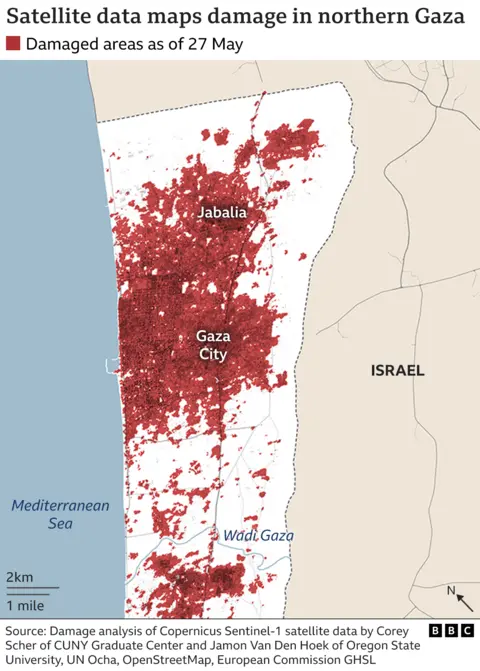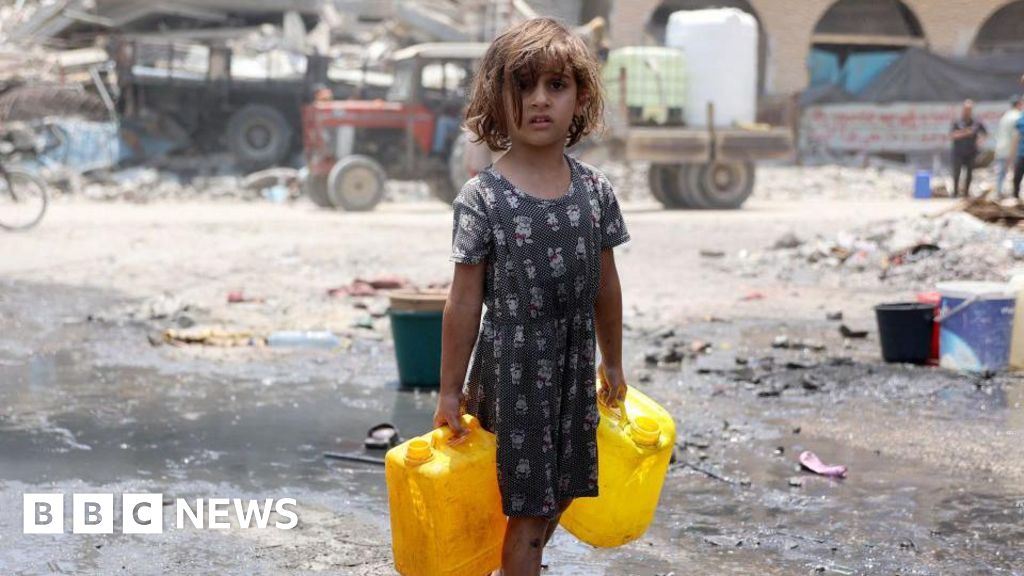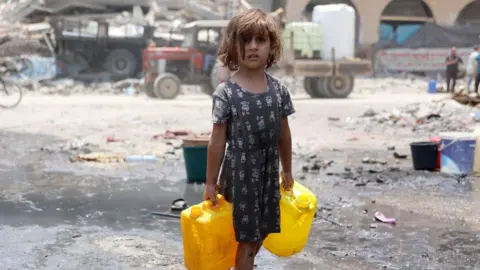 AFP
AFPPalestinians who have returned to the Jabaliya refugee camp in northern Gaza in recent days have expressed shock at the extent of destruction caused by Israel’s three-week military campaign against Hamas and other Palestinian armed groups.
One of the more than 60,000 displaced people who fled fierce fighting and bombing in and around the camp last month said he witnessed “horrible scenes”.
“The sand underfoot was scorched; walking was simply unbearable. “The streets were strewn with rubble and demolished buildings. Words cannot describe the devastation.
The man, who asked not to be named, also said he saw injured and dead people “lying on the ground” and that basic services and supplies were not provided.
“There is no electricity or water. There are no clinics or medicines,” he added. “Wells were destroyed, shops and supermarkets were destroyed, and there was a shortage of food.”
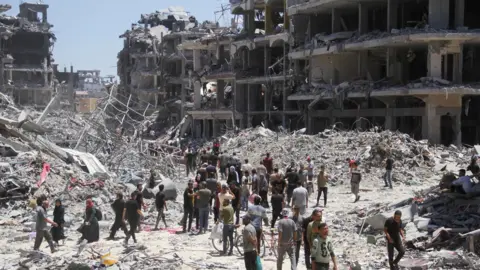 Reuters
ReutersThe town of Jabaliya and its decades-old urban refugee camp – the largest in Gaza with more than 110,000 registered residents – have experienced several years of disruption following the outbreak of war between Israel and Hamas in October. Weeks of devastating bombing and fighting.
The Israel Defense Forces (IDF) said troops took control of the camp in late December after a series of operations and killing “many terrorists”.
It subsequently scaled back combat operations in northern Gaza and announced that Hamas forces on the ground had been disbanded. But that left a power vacuum that allowed the organization to rebuild.
On May 12, the IDF said troops would return to Jabaliya to conduct an operation “based on intelligence that Hamas is seeking to regroup terrorist infrastructure and operatives in the area.”
Over the next three weeks, fighting intensified as tanks and troops advanced into the camps under heavy airstrikes and artillery fire. One military official said the fighting was “probably the most intense they have seen in the past seven months.”
On Friday, the IDF announced that its forces had completed their mission, “neutralizing hundreds of terrorists in fierce fighting and close encounters” and destroying dozens of “terrorist infrastructure and operational camps.”
Troops also located and destroyed more than 10 kilometers (6 miles) of a network of underground tunnels and recovered the bodies of seven Israelis taken hostage by Hamas in October, the report said.
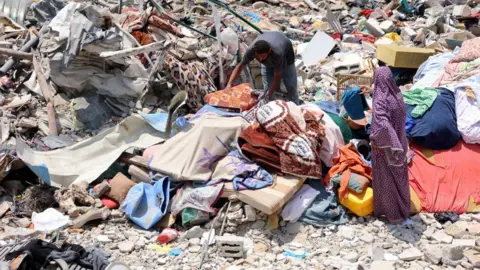 AFP
AFPDisplaced families were soon photographed walking back to the camp with their remaining belongings along streets lined with destroyed buildings.
Mahmoud Bassal, spokesman for Gaza’s Hamas civil defense force, said on Friday that rescue teams had found dozens of bodies in the Jabaliya camp, including 30 members of a family. By Sunday morning, the number had reached 70, according to Palestinian media reports.
The identity of the deceased is not yet known. But the IDF’s Arabic-speaking spokesman, Lieutenant Colonel Avichay Adraee, insisted to X that they were members of Hamas and other armed groups.
Bashar also said that Israeli forces destroyed most of the houses, the central market and almost all infrastructure in the camp.
He added that the fifth floor of Al Auda Hospital in Jabaliya and the main generator of Kamal Adwan Hospital in nearby Beit Lahiya were destroyed.
Meanwhile, UNRWA, the U.N. agency for Palestinian refugees, said it had received “horrendous reports” from the Jabaliya refugee camp where it provides services.
According to a post on . There were also reports that UNRWA offices were destroyed and razed by Israeli army airstrikes, the report added.
The head of UNRWA, Filippo Lazzarini, said thousands of people in the camps now have “no choice but to live in rubble and in destroyed UNRWA facilities”.
 Reuters
ReutersOne returnee told the BBC Arabic-language Gaza Lifeline program that he and his seven-year-old son saw “the bodies of martyrs scattered in the streets” on Saturday.
“East Jabaliya has suffered unprecedented devastation,” said Diab Abu Salama. “All shops in Jabaliya were destroyed, as well as surrounding houses.”
“There is no doubt that the goal of the occupation [Israel] He claimed that displacing people and destroying their homes and shops was an attempt to force them to leave the country, before adding: “But we will stand firm.”
Meanwhile, Musaed Zaqzouq described how he found nothing but rubble at his home three weeks ago.
“The scene was very horrific,” he said. “My home was completely destroyed, as was my neighborhood.”
“Water pipes were destroyed… sewage pipes were damaged,” he added. “There is no longer a suitable place to live.”
One woman, who asked not to be named, said the damage was so extensive that “we walked down the street as if we were seeing them for the first time”.
She also urged the international community to take action to help Palestinians in Jabaliya and elsewhere in Gaza.
“What caused such massive destruction?” she asked. “Please, come to us quickly and see how much we have been tortured.”
On October 7, Hamas launched a cross-border attack on southern Israel, killing about 1,200 people and taking another 251 people hostage. Israel launched a military operation in Gaza to destroy Hamas.
Since then, at least 36,470 people have been killed in Gaza, according to the Hamas-run health ministry.
